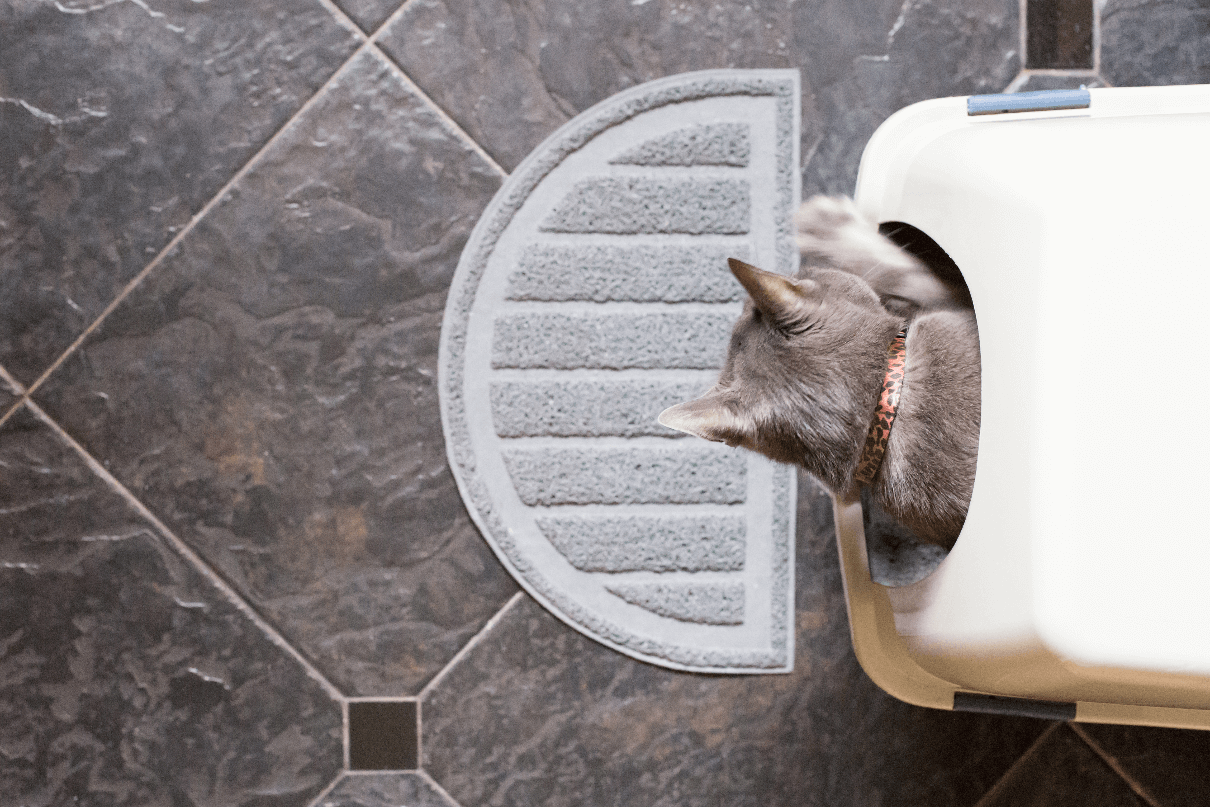
Cat Litter: Is Clumping Or Non-Clumping Litter Better?
Product Guides
Cat
01/05/2023
Choosing the best cat litter for your cat can be a difficult choice simply because there are so many options available. A common question we get asked from cat owners is “Should I use clumping or non-clumping cat litter?”
Clumping cat litters have become widely available and very popular, but non-clumping cat litters are still commonly used too.
Let’s look at some of the pros and cons of clumping and non-clumping cat litter.
Non-Clumping Cat Litter Pros and Cons
Some of the first commercially available cat litters were of the non-clumping type.
Why? Non-clumping cat litter is good at removing odours associated with cat urine because it has the ability to absorb relatively large volumes of urine. While there are non-scented litters available, some non-clumping litters also have additional additives, such as baking soda or charcoal, which are designed to help control unpleasant odours.
As the litter becomes saturated, however, urine may begin to pool in the bottom of the litter box.
Therefore, removing soiled, non-clumping litter is often difficult without changing the entire box. Many who use non-clumping cat litter find that they need to be replaced the litter and clean the litter box at least once a week.
Non-clumping litter is typically crystal cat litter or plant-based alternatives (i.e. pine, corn, wheat, beet pulp, and wood). Some people prefer non-clumping cat litter because it is often less expensive than clumping litter, and others choose it because their cats prefer it.
Clumping Cat Litter Pros and Cons
Clumping cat litters are those that are designed so that urine and faeces can be removed easily from the box without having to empty the entire box. Most clumping cat litters are clay and contain a material known as bentonite that allows the litter to form a nice solid clump as the litter absorbs liquid. There are also alternative all-natural fibers that can help clump the cat litter tightly.
Once the litter is clumped together, it can be removed from the litter box — along with any faeces in the box — relatively easily. Just scoop out the soiled litter out of the box and leave the clean litter in its place. The ability to scoop and remove soiled litter from the box means that the box stays cleaner longer. As soiled litter is removed from the box, it can simply be replenished by adding an equal amount of fresh litter.
However, that does not mean that cat litter boxes filled with clumping cat litter never need to be emptied and cleaned. It only means that the task can be performed less frequently than with the non-clumping litters. Boxes containing clumping litter still need to be emptied, cleaned, and refilled with fresh litter at least once a month (based on a one cat home, or one cat litter box). If your cat produces an especially high volume of urine or if you have multiple cats, this will need to be done more frequently.
Should I use clumping or non-clumping cat litter?
The choice of clumping versus non-clumping litter is a personal decision and will depend on the cat litter material (crystal, clay, or natural) you decide has the best benefits for your fur friend. Though many cats appear to prefer clumping litter because it is easier for them to push it aside, some cats prefer non-clumping clay.
Both clumping and non-clumping cat litter produce some dust, although there are formulations of both types that are designed to decrease the amount of dust in the litter. Litters can also be a concern for pet owners if the litter is ingested. This will depend on the litter material (clay, silica, plant-based material, etc.) and the amount of litter ingested. Generally, it takes a lot of ingested litter to cause a problem and it is often more of a concern for dogs that like to raid the cat litter box than it is for the cat.
Choosing the litter that your cat prefers makes it less likely that litter box avoidance issues and inappropriate elimination will become a problem for you. Your preferences combined with your cat’s preferences, age and health will determine which litter is the best choice of cat litter for you — and which litter you will want to stick with.

Written by The Pet.co.nz
Team
Written by The Pet.co.nz Team
A team of specialists with backgrounds in animal nursing, animal care, and all things pet related.